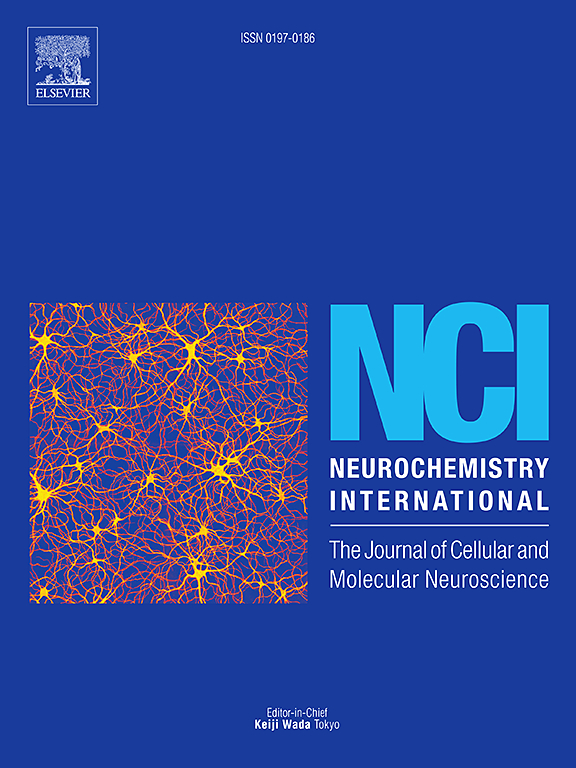活化星形胶质细胞重编程为gaba能神经元治疗三叉神经痛。
IF 4
3区 医学
Q2 BIOCHEMISTRY & MOLECULAR BIOLOGY
引用次数: 0
摘要
三叉神经痛(TN)是最常见的脑神经痛类型。目前,在临床实践中有效和安全的治疗方案的可得性方面仍然存在重大差距。将增殖激活的星形胶质细胞转分化为抑制性神经元是中枢神经系统疾病的一种潜在治疗策略。gaba能神经元是最常见的抑制性神经元之一。本研究旨在将三叉神经痛脊髓尾侧亚核(SpVc)中增殖的星形胶质细胞重编程为gaba能神经元,改善神经元兴奋-抑制平衡,减轻疼痛,为三叉神经痛的治疗提供一种潜在的方法。采用三叉神经眶下支慢性收缩性眶下远端神经(CCI-dION)损伤模型,利用腺相关病毒在星形胶质细胞中过表达转录因子Sox2和Mash1。采用免疫荧光、western blotting、qPCR和电镜观察SpVc区星形胶质细胞和gaba能神经元的变化。采用机械痛阈测试评估大鼠TN。CCI-dION大鼠SpVc区星形胶质细胞增殖活化,gaba能神经元数量明显减少。在星形胶质细胞中过表达Sox2和Mash1,可显著转分化为gaba能神经元,显著提高CCI-dION大鼠的机械痛阈值。此外,氟柠檬酸介导的星形胶质细胞失活消除了神经元重编程和镇痛作用,强调了星形胶质细胞在这一过程中的重要作用。上述结果提示,星形胶质细胞过表达Sox2和Mash1可显著转分化为gaba能神经元,显著提高CCI-dION大鼠的机械痛阈值。因此,这种方法有可能为TN提供一种新的治疗方法。本文章由计算机程序翻译,如有差异,请以英文原文为准。
Reprogramming activated astrocytes into GABAergic neurons to treat trigeminal neuralgia
Trigeminal neuralgia (TN) is the most common type of cranial neuralgia. Currently, there remains a significant gap in the availability of effective and safe treatment options in clinical practice. Transdifferentiation of proliferating activated astrocytes into inhibitory neurons is a potential therapeutic strategy for central nervous system diseases. GABAergic neurons are one of the most type of prevalent inhibitory neurons. This study aims to reprogram proliferating astrocytes in the spinal trigeminal subnucleus caudalis (SpVc) into GABAergic neurons, could improve neuronal excitation-inhibition balance, alleviate pain, which serve as a potential treatment for trigeminal neuralgia. A chronic constriction injury of the distal infraorbital nerve (CCI-dION) was induced in the infraorbital branch of the trigeminal nerve to create a rat model of TN. Adeno-associated viruses were used to overexpress transcription factors Sox2 and Mash1 in astrocytes. The changes in astrocytes and GABAergic neurons in the SpVc region were detected by immunofluorescence, Western blotting, qPCR, and electron microscopy. The mechanical pain threshold testing was used to assess rat TN. In the SpVc region of CCI-dION rats, astrocytes showed proliferation and activation, and the number of GABAergic neurons decreased significantly. Overexpressing Sox2 and Mash1 in astrocytes led to a significant transdifferentiation into GABAergic neurons, which − improved the mechanical pain threshold in CCI-dION rats. Furthermore, fluorocitrate-mediated astrocyte deactivation abolished both the neuronal reprogramming and the analgesic effects, underscoring the essential role of astrocytes in this process. These findings suggest that overexpressing Sox2 and Mash1 in astrocytes led to a significant transdifferentiation into GABAergic neurons, which significantly improved the mechanical pain threshold in CCI-dION rats. Thus, this approach has the potential to provide a new treatment for TN.
求助全文
通过发布文献求助,成功后即可免费获取论文全文。
去求助
来源期刊

Neurochemistry international
医学-神经科学
CiteScore
8.40
自引率
2.40%
发文量
128
审稿时长
37 days
期刊介绍:
Neurochemistry International is devoted to the rapid publication of outstanding original articles and timely reviews in neurochemistry. Manuscripts on a broad range of topics will be considered, including molecular and cellular neurochemistry, neuropharmacology and genetic aspects of CNS function, neuroimmunology, metabolism as well as the neurochemistry of neurological and psychiatric disorders of the CNS.
 求助内容:
求助内容: 应助结果提醒方式:
应助结果提醒方式:


